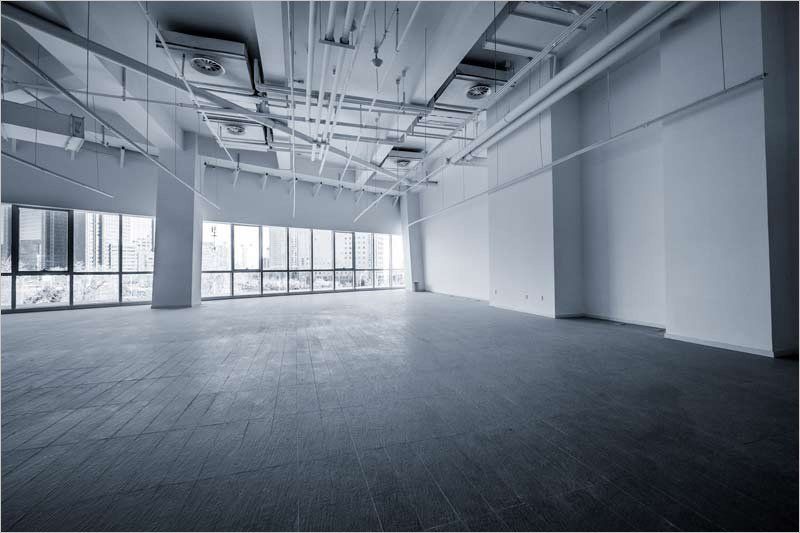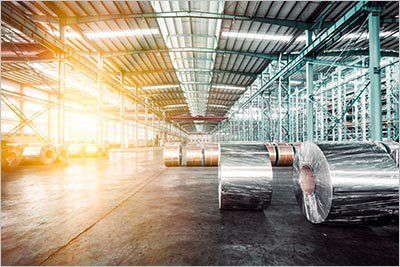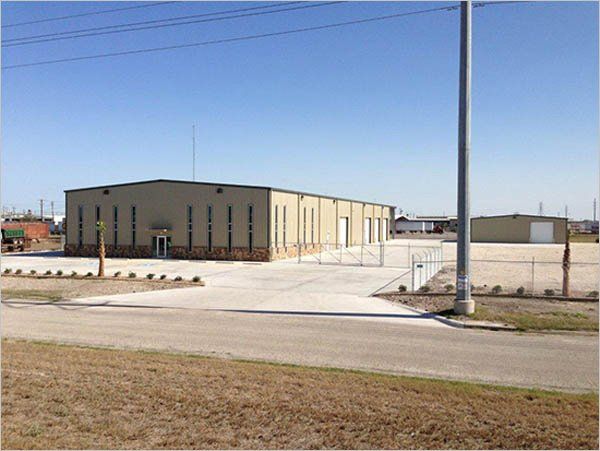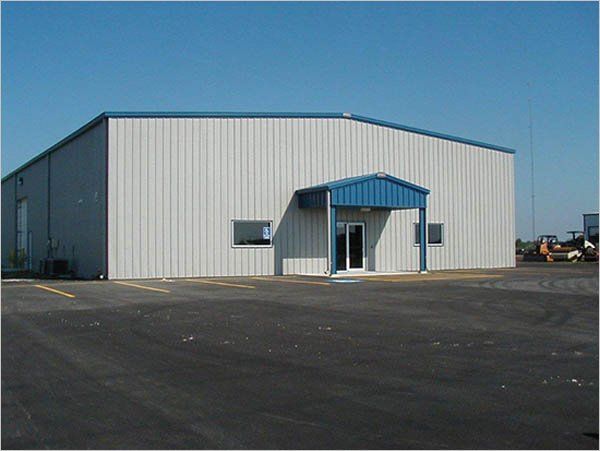BLOG

Commercial construction does not have to be a complicated process. There are options and methods available to you that will satisfy your construction needs while keeping your stress level low and helping you increase your profit potential.
These benefits come in the form of turn-key construction. With turn-key properties, a single contractor handles the entire span of the project from design to commissioning, which can afford you several benefits. Here are some benefits you can expect from turn-key construction.
EASIER PROCESS
When a business expands, there are pluses and minuses. On the one hand, expansion is a sign that a company is growing and increasing their level of success. On the other side, with expansion, comes construction projects.
With so many other tasks involved in the daily operation of your business, adding a construction project to the list only makes matters worse. When you factor in all the different contractors you have to work with, such as designers and material manufacturers, the whole process can quickly get out of hand.
When businesses rely on turn-key construction, they are able to eliminate this extra workload. Turn-key construction gives busy business owners the benefit of working with a single contractor, which can save you countless hours of phone calls and stress.
GREATER COST MANAGEMENT
For small and large companies alike, cost control with new construction is vital to the success of current operations, as well as for any future opportunities for success. The reason for this all comes down to profit — the lower the construction costs are, the greater the potential to earn.
Turn-key properties provide businesses with an opportunity to control their costs and increase profits. One area where mayhem can settle in is the invoice process. When you are dealing with several contractors, the process of managing all their separate invoices makes it challenging to accurately keep track of costs, which could lead to an over-budget project.
The single-contractor management of turn-key properties means you only receive a single invoice. A streamlined invoice process makes way for greater costs control and an easier payment process.
LESS STRESSFUL CHANGE REQUESTS
Commercial construction projects are well-designed and thoroughly planned; however, the inevitable always occurs. Uncontrollable hiccups like material shortages arise. And sometimes your needs change, which may cause you to initiate design changes.
When you are dealing with several contractors, even a small change request can activate a domino effect of havoc because you have to contact the designer, material supplier, and all other contractors to update the necessary changes.
Turn-key construction affords you the ability to make easy changes to your construction project by dealing with a single contractor. Any fallout from the changes will be handled by the turn-key contractor to keep the process as stress-free for you as possible.
ENHANCED QUALITY
As a business owner, you are aware that you can sometimes have too many employees scheduled to work at one time. When this type of scheduling conflict occurs, some employees lag in their efforts because they assume there are enough employees on hand that someone else will surely pick up the slack.
This same type of situation can occur when you're partnering with several different contractors. In some instances, you might have one contractor who moves slower than the others, or you will have contractors that provide subpar services. However, with turn-key construction, there is one contractors' name on the line. For you, this means greater control, which translates into improved quality.
If you are ready to experience the benefits that a turn-key property can afford your business’s expansion efforts, then Dickson Builders, Inc. can assist you in accomplishing this goal.

Texas is known for its storms. Between the hurricanes, the tornadoes and the earthquakes, any type of Texas building must meet certain requirements. Strong winds can strip panels from walls, tear roofs off of buildings and risk the lives of those inside these buildings.
Because the great state of Texas regularly experiences storms, it is vital to the safety of your employees and your customers that your metal business buildings meet all of the standards for wind safety. Here is a list of recommendations to keep your buildings safe.
1. Type of Steel
Whether you operate out of an office, a warehouse or any other type of building, only premium steel should be used to construct your buildings. Being made of steel doesn't automatically ensure you will get a wind-resistant building, so it's important to know your steel. Premium steel will be resistant to both rust and weather damage.
To take this one step further, consider buying a pre-constructed metal building. Not only are they wind resistant, but they are also resistant to termites and corrosion.
2. Extra Reinforcement
The joints in the walls and the edges around the roofs are the places where the most damage can occur in a wind storm. Extra reinforcement should be added to these areas to ensure your building lasts. Purchasing a curved building is the best way to do this, but there are ways to reinforce the buildings you already have if you're not ready to purchase a new one.
3. Construction Load
Before you decide on which building to purchase, know your construction load. What items will be permanent fixtures and which ones will be in and out? Knowing the weight that your building will be expected to hold will allow your contractor to select the right building for your needs and ensure that it meets all of the wind-safety standards.
4. Foundation
While metal buildings are built to withstand winds up to 170 mph, this is only accurate if you have a solid foundation. Having a solid foundation will not only help keep your building grounded in a storm, but it will also make it waterproof.
5. Windows and Doors
When you are trying to decide where to put your windows and doors, you should consider more than just where you want the parking lot. You should pay attention to which direction the wind generally blows.
Keeping the windows and doors out of harm's way from strong winds will ensure that they last a long time. If you do insist on putting your windows facing the wind, make sure you use specialty windows with high-quality insulation.
6. Waterproof
Unfortunately, wind isn't the only thing that can damage your building in a storm. Hurricanes can bring with them several inches of rain water, which can leak into your building and cause permanent damage.
Using sealants on your building will help keep the rain out. There are factory standard sealants, but there are other waterproofing sealants that will go a long way towards keeping you dry.
The same goes for weather stripping. They can be used on doors and windows to keep the moisture out. Ask your contractor about the different ways you can waterproof your business.
Whether you are shopping around for a new metal building or trying to weatherproof the one you have, keep in mind the type of steel you use, the extra reinforcements you apply, your individual construction load, the quality of your foundation, the placement of your windows and doors and your waterproofing techniques.
Dickson Builders, Inc.
has all of the necessary tools to successfully construct exactly what your business needs. Call us today and find out all the ways we can help your buildings withstand any storm.

When deciding whether to construct a building from metal or other materials, business owners frequently consider the project, utility and maintenance costs. However, they often don't think about the work that rebuilding after a flood would require. Business owners in Corpus Christi should take into account how the building would fare in a flood — metal buildings do particularly well in this area.
GALVANIZED STEEL RESISTS RUSTING
Certain metals including plain steel, corrode when they come into direct contact with water. However, the material used in metal buildings is designed to not rust for many years.
Most metal buildings are made from galvanized steel. Galvanizing covers the steel with a layer of zinc. This layer forms a barrier between the steel and any water, preventing the steel from rusting. Zinc doesn't corrode when it comes into contact with water.
Galvanized steel protects metal buildings from rainwater, sleet and snow. It also safeguards steel from floods. It doesn't matter if water is coming from above or from below, the layer of zinc will stop the water from contacting the steel and causing corrosion.
STEEL DOESN'T ABSORB WATER
Unlike wood, sheetrock, mortar and other building materials, metal doesn't absorb water. In a flood, water will pile up against the building and then flow away. A few droplets may remain on the metal, but these either dry on their own or are easily wiped away.
Because metal doesn't absorb water, it has several advantages over wood, sheetrock, mortar and similar materials that do absorb water:
- Metal doesn't rot
- Metal doesn't need to be replaced
- Metal dries faster
In short, metal requires less recovery work after a flood and reduces the repair work to be done.
METAL RESISTS MOLD GROWTH
Because metal isn't organic, doesn't have pores and doesn't absorb water, it resists mold and mildew growth. Mold and mildew can grow on metal, but steel is a lot less susceptible to these pathogens than wood, sheetrock and similar building materials. Metal has fewer places for mold spores to land, and it doesn't retain moisture that can lead to mold and mildew growth.
This advantage alone can greatly reduce the cost of reconstructing a building that's damaged in a flood. Removing all mold and mildew that grows often accounts for a large portion of a company’s flood recovery expenses. By controlling how quickly and easily mold and mildew can grow, businesses can cut down on removal costs and reconstruction expenses.
PAINTED METAL STAYS INTACT
Since metal has a smooth surface, there generally aren't any places for flood waters to seep between a metal wall and the paint that's on the metal. In contrast, flood water might get into wood's pores, and it can easily get under vinyl siding as flood levels rise.
Once water gets into a wall's building materials, it can destroy the wall's paint. Drop by drop, water can seep between the wall and paint, slowly separating the paint from the wall. The result is often peeling paint which looks unsightly and is prone to chipping. The paint must then be removed and the wall has to be repainted.
This isn't a problem with metal, so there's no need to have metal building exteriors repainted after a flood. The resulting savings are significant, for it's often not possible to paint just a part of a wall. If just the bottom foot of a wall is peeling and needs repainting, then the whole wall usually has to be painted because the old paint will appear faded next to the new one.
If you're interested in building a metal structure in the Corpus Christi area, contact Dickson Builders, Inc. to learn more about metal construction services.

While land surveys aren't a requirement when purchasing property, having a land survey provides advantages and helps you avoid confusion down the line. A land survey is essentially a detailed map of a property. The legal boundaries and other features are outlined to provide a clear picture of where your property lines begin and end.
Conducting a land survey is useful in a number of situations, such as assessing the value of a home and avoiding neighbor disputes over boundaries. Here's what you need to know if you're considering hiring a land surveyor.
SURVEY METHODS
There are a few types of land surveys, but the most common purpose of land surveying is to outline property boundaries. A licensed land surveyor will use your deed as a guide. While deeds include a description of property lines, these are often outdated or lack crucial information. The surveyor will physically measure the property to ensure accuracy.
Surveyors use a variety of equipment, such as global positioning systems and distance meters to map the precise property boundaries. The type of tools used will vary depending on the type of land being surveyed.
EASEMENTS
Surveys do more than plot out property boundaries. They also help identify issues that may affect your title, such as easements. An easement is a property right that gives a non-owner the legal right to use part of the land for a limited purpose.
This means that if you purchase a property where the neighbor has been granted an easement, your new neighbor will have a legal right to use part of your land. You'll want to know about these types of issues prior to purchasing a property.
ENCROACHMENT
Unlike an easement, an encroachment occurs when a non-owner uses part of the land without receiving the legal right to do so. Encroachments are the cause of significant strife between neighbors.
If you're buying a property, then you will want to know the exact property lines so you can identify any encroachment issues. For example, a neighbor may have built a tool shed or a second garage that encroaches on your property.
If an encroaching neighbor refuses to rectify the encroachment, then you will have to seek a court order. Having a land survey done can help you avoid the headache of encroachment issues.
NEW CONSTRUCTION
If you currently own a home and plan on adding extensions or if you purchased land and plan to build on it, then you'll need a survey to get a permit. This is typically referred to as a location survey, and the purpose is to identify your boundary lines so that you remain within them while building. You'll be able to avoid construction issues by having a snapshot of your property.
OTHER CONSIDERATIONS
Having land surveyed prior to purchasing a property also helps you determine other problems, such as whether the land is in an area that is prone to flooding. This would affect the property value.
You can use the information from the land survey to determine whether the property value was overestimated. A survey is also useful if you plan on sub-dividing the land to sell portions or to give to relatives.
SURVEY COSTS
The upfront cost of a land survey varies depending on a number of factors, including the land size, the type of terrain and the age of the land. The average cost is about $500, but you can expect to pay more for a large plot compared to a smaller one. In addition, you can expect to pay more if the land has rough terrain and lots of trees.
Pre-purchase land surveys are well worth the investment. If you have questions about cost and would like a quote, contact Dickson Builders, Inc.

In the current economy, everyone’s looking for a way to save some money. If you’ve been thinking about investing in a new building for any reason, buying a metal building can get you the savings you’ve been looking for while providing you with all the space you could need. Metal buildings are designed to be as energy efficient as possible and can offer some excellent savings. These benefits of these buildings include:
- Reflecting sunlight away from the building in question. The metal materials reflect UV rays away from your space, ensuring that the heat doesn’t build up and make the interior of your space hot.
- By preventing heat buildup, the metal materials make sure your air conditioning unit doesn’t have to work quite as hard to keep the space cool in the warmer months.
- These buildings are also expertly insulated to boost thermal efficiency. This is achieved through the use of sandwich plates and other special construction pieces used to during construction.
Your metal building can be a huge benefit to your finances if you’re looking for a way to save some money on your energy bills in the upcoming months. If you want to learn more about metal buildings and what makes them so much more efficient than other options, contact Dickson Builders, Inc. today.

Commercial construction does not have to be a complicated process. There are options and methods available to you that will satisfy your construction needs while keeping your stress level low and helping you increase your profit potential.
These benefits come in the form of turn-key construction. With turn-key properties, a single contractor handles the entire span of the project from design to commissioning, which can afford you several benefits. Here are some benefits you can expect from turn-key construction.
EASIER PROCESS
When a business expands, there are pluses and minuses. On the one hand, expansion is a sign that a company is growing and increasing their level of success. On the other side, with expansion, comes construction projects.
With so many other tasks involved in the daily operation of your business, adding a construction project to the list only makes matters worse. When you factor in all the different contractors you have to work with, such as designers and material manufacturers, the whole process can quickly get out of hand.
When businesses rely on turn-key construction, they are able to eliminate this extra workload. Turn-key construction gives busy business owners the benefit of working with a single contractor, which can save you countless hours of phone calls and stress.
GREATER COST MANAGEMENT
For small and large companies alike, cost control with new construction is vital to the success of current operations, as well as for any future opportunities for success. The reason for this all comes down to profit — the lower the construction costs are, the greater the potential to earn.
Turn-key properties provide businesses with an opportunity to control their costs and increase profits. One area where mayhem can settle in is the invoice process. When you are dealing with several contractors, the process of managing all their separate invoices makes it challenging to accurately keep track of costs, which could lead to an over-budget project.
The single-contractor management of turn-key properties means you only receive a single invoice. A streamlined invoice process makes way for greater costs control and an easier payment process.
LESS STRESSFUL CHANGE REQUESTS
Commercial construction projects are well-designed and thoroughly planned; however, the inevitable always occurs. Uncontrollable hiccups like material shortages arise. And sometimes your needs change, which may cause you to initiate design changes.
When you are dealing with several contractors, even a small change request can activate a domino effect of havoc because you have to contact the designer, material supplier, and all other contractors to update the necessary changes.
Turn-key construction affords you the ability to make easy changes to your construction project by dealing with a single contractor. Any fallout from the changes will be handled by the turn-key contractor to keep the process as stress-free for you as possible.
ENHANCED QUALITY
As a business owner, you are aware that you can sometimes have too many employees scheduled to work at one time. When this type of scheduling conflict occurs, some employees lag in their efforts because they assume there are enough employees on hand that someone else will surely pick up the slack.
This same type of situation can occur when you're partnering with several different contractors. In some instances, you might have one contractor who moves slower than the others, or you will have contractors that provide subpar services. However, with turn-key construction, there is one contractors' name on the line. For you, this means greater control, which translates into improved quality.
If you are ready to experience the benefits that a turn-key property can afford your business’s expansion efforts, then Dickson Builders, Inc. can assist you in accomplishing this goal.

Texas is known for its storms. Between the hurricanes, the tornadoes and the earthquakes, any type of Texas building must meet certain requirements. Strong winds can strip panels from walls, tear roofs off of buildings and risk the lives of those inside these buildings.
Because the great state of Texas regularly experiences storms, it is vital to the safety of your employees and your customers that your metal business buildings meet all of the standards for wind safety. Here is a list of recommendations to keep your buildings safe.
1. Type of Steel
Whether you operate out of an office, a warehouse or any other type of building, only premium steel should be used to construct your buildings. Being made of steel doesn't automatically ensure you will get a wind-resistant building, so it's important to know your steel. Premium steel will be resistant to both rust and weather damage.
To take this one step further, consider buying a pre-constructed metal building. Not only are they wind resistant, but they are also resistant to termites and corrosion.
2. Extra Reinforcement
The joints in the walls and the edges around the roofs are the places where the most damage can occur in a wind storm. Extra reinforcement should be added to these areas to ensure your building lasts. Purchasing a curved building is the best way to do this, but there are ways to reinforce the buildings you already have if you're not ready to purchase a new one.
3. Construction Load
Before you decide on which building to purchase, know your construction load. What items will be permanent fixtures and which ones will be in and out? Knowing the weight that your building will be expected to hold will allow your contractor to select the right building for your needs and ensure that it meets all of the wind-safety standards.
4. Foundation
While metal buildings are built to withstand winds up to 170 mph, this is only accurate if you have a solid foundation. Having a solid foundation will not only help keep your building grounded in a storm, but it will also make it waterproof.
5. Windows and Doors
When you are trying to decide where to put your windows and doors, you should consider more than just where you want the parking lot. You should pay attention to which direction the wind generally blows.
Keeping the windows and doors out of harm's way from strong winds will ensure that they last a long time. If you do insist on putting your windows facing the wind, make sure you use specialty windows with high-quality insulation.
6. Waterproof
Unfortunately, wind isn't the only thing that can damage your building in a storm. Hurricanes can bring with them several inches of rain water, which can leak into your building and cause permanent damage.
Using sealants on your building will help keep the rain out. There are factory standard sealants, but there are other waterproofing sealants that will go a long way towards keeping you dry.
The same goes for weather stripping. They can be used on doors and windows to keep the moisture out. Ask your contractor about the different ways you can waterproof your business.
Whether you are shopping around for a new metal building or trying to weatherproof the one you have, keep in mind the type of steel you use, the extra reinforcements you apply, your individual construction load, the quality of your foundation, the placement of your windows and doors and your waterproofing techniques.
Dickson Builders, Inc.
has all of the necessary tools to successfully construct exactly what your business needs. Call us today and find out all the ways we can help your buildings withstand any storm.

When deciding whether to construct a building from metal or other materials, business owners frequently consider the project, utility and maintenance costs. However, they often don't think about the work that rebuilding after a flood would require. Business owners in Corpus Christi should take into account how the building would fare in a flood — metal buildings do particularly well in this area.
GALVANIZED STEEL RESISTS RUSTING
Certain metals including plain steel, corrode when they come into direct contact with water. However, the material used in metal buildings is designed to not rust for many years.
Most metal buildings are made from galvanized steel. Galvanizing covers the steel with a layer of zinc. This layer forms a barrier between the steel and any water, preventing the steel from rusting. Zinc doesn't corrode when it comes into contact with water.
Galvanized steel protects metal buildings from rainwater, sleet and snow. It also safeguards steel from floods. It doesn't matter if water is coming from above or from below, the layer of zinc will stop the water from contacting the steel and causing corrosion.
STEEL DOESN'T ABSORB WATER
Unlike wood, sheetrock, mortar and other building materials, metal doesn't absorb water. In a flood, water will pile up against the building and then flow away. A few droplets may remain on the metal, but these either dry on their own or are easily wiped away.
Because metal doesn't absorb water, it has several advantages over wood, sheetrock, mortar and similar materials that do absorb water:
- Metal doesn't rot
- Metal doesn't need to be replaced
- Metal dries faster
In short, metal requires less recovery work after a flood and reduces the repair work to be done.
METAL RESISTS MOLD GROWTH
Because metal isn't organic, doesn't have pores and doesn't absorb water, it resists mold and mildew growth. Mold and mildew can grow on metal, but steel is a lot less susceptible to these pathogens than wood, sheetrock and similar building materials. Metal has fewer places for mold spores to land, and it doesn't retain moisture that can lead to mold and mildew growth.
This advantage alone can greatly reduce the cost of reconstructing a building that's damaged in a flood. Removing all mold and mildew that grows often accounts for a large portion of a company’s flood recovery expenses. By controlling how quickly and easily mold and mildew can grow, businesses can cut down on removal costs and reconstruction expenses.
PAINTED METAL STAYS INTACT
Since metal has a smooth surface, there generally aren't any places for flood waters to seep between a metal wall and the paint that's on the metal. In contrast, flood water might get into wood's pores, and it can easily get under vinyl siding as flood levels rise.
Once water gets into a wall's building materials, it can destroy the wall's paint. Drop by drop, water can seep between the wall and paint, slowly separating the paint from the wall. The result is often peeling paint which looks unsightly and is prone to chipping. The paint must then be removed and the wall has to be repainted.
This isn't a problem with metal, so there's no need to have metal building exteriors repainted after a flood. The resulting savings are significant, for it's often not possible to paint just a part of a wall. If just the bottom foot of a wall is peeling and needs repainting, then the whole wall usually has to be painted because the old paint will appear faded next to the new one.
If you're interested in building a metal structure in the Corpus Christi area, contact Dickson Builders, Inc. to learn more about metal construction services.

